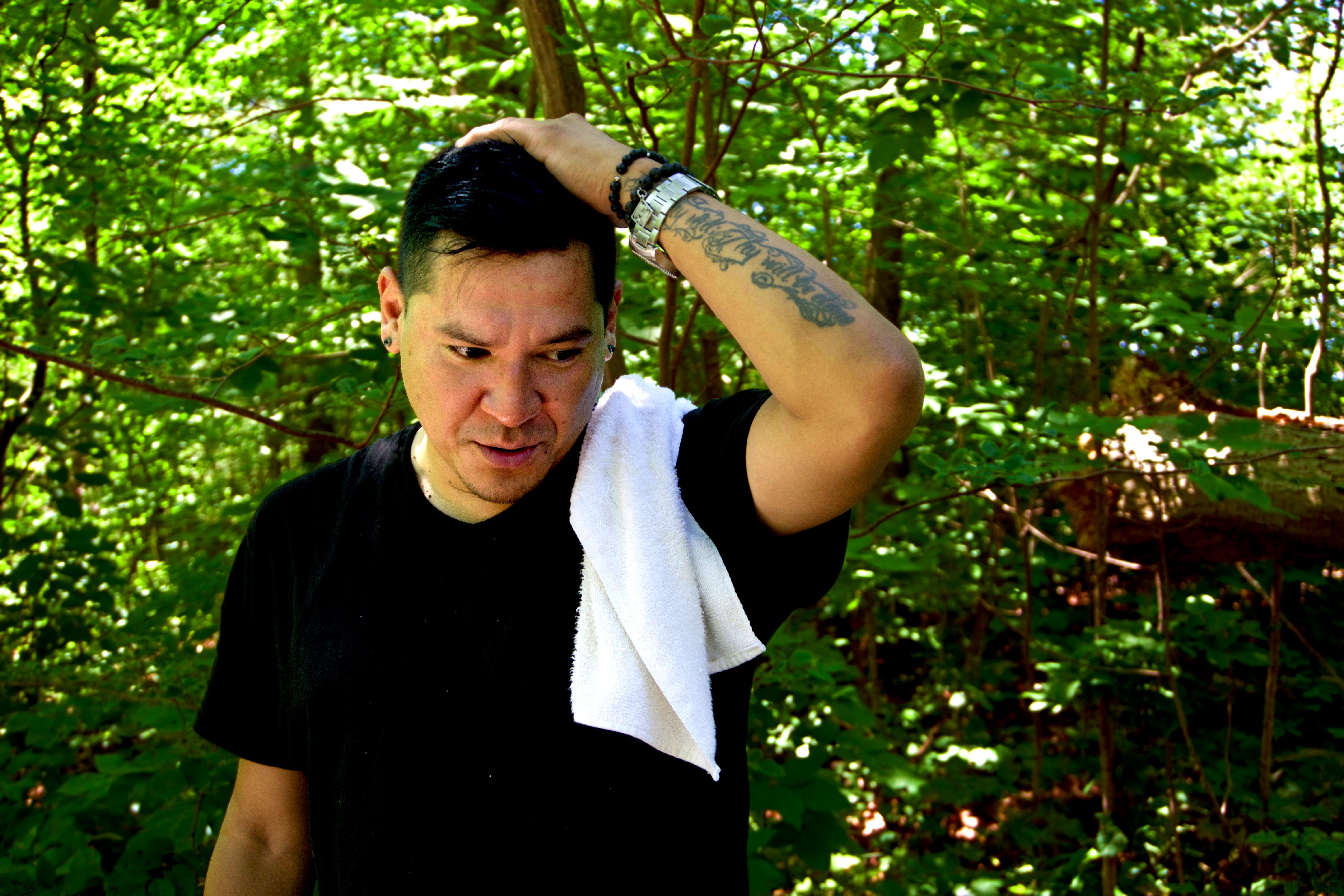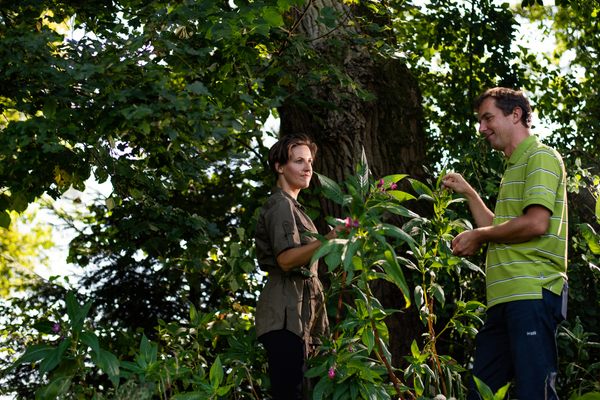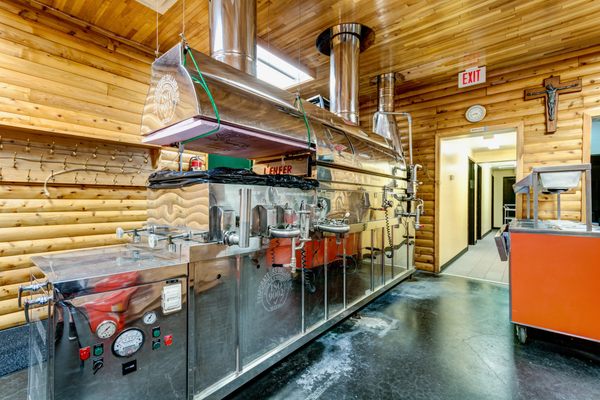How an Indigenous Chef Is Decolonizing Canadian Cuisine
Rich Francis is reclaiming and reinventing an erased food culture.

The author would like to thank Sila Rogan and Angela Bellegarde from the Indigenous Innovation Initiative at Grand Challenges Canada for their support and insight during the researching and reporting process.
In Canada, true Indigenous cuisine is relatively unknown. Ask almost any Canadian to name an Indigenous dish, and their answer will almost certainly be “bannock,” a kind of dry skillet bread. Chef Rich Francis, based in Six Nations of the Grand River, Ontario, refuses to serve it. “Bannock isn’t even Indigenous, in the truest sense,” he says. “It was what we made when our land was taken, our movement limited, and our provisions reduced to a sack of flour. It was taught to us—it’s Scottish traditionally—it’s colonization food.”
Chef Francis, who is Gwich’in and Haudenosaunee, has been in the spotlight over the last few years, often for challenging beliefs such as those about bannock. In 2014, he was the first-ever Indigenous contestant on Top Chef Canada, where he took third place despite being a favorite to win. His incorporation of Indigenous medicine flavors (sweetgrass, tobacco, sage, and cedar) throughout the season won him praise, but the judges were unforgiving about his offering featuring muskox. Some undercooked quail in the dish didn’t help, either.
Francis is working to help change the narrative around Indigenous cuisine not exactly by recreating it, but by bringing some of its ingredients and techniques to modern tables and palates. Over the past few years, Francis has hosted dinners around the theme of reconciliation, to explore what modern Indigenous cuisine is, and could be. To do so, he’s looking within himself, to nature, and to elders across the country—but there are few who can fully recall the flavors of a pre-colonial palate.
“It isn’t something you can just pick up a cookbook and learn,” he says. “It’s been erased, and so many of the elders can hardly remember the tastes of these foods. They were taught not to taste it.” Here, he’s particularly referring to the residential school system, which took Indigenous youth away from their homes, and sought to “kill the Indian in the child.” It’s said that South Africa’s apartheid policies were modeled after Canada’s policies.
Many of the challenges that Francis has faced are part of a continuing legacy of marginalizing Indigenous people, culture, and cuisine in Canada. His reconciliation dinners have often been underground affairs, because as of right now, restaurants cannot legally serve many of the traditional things he wishes to bring back to the Indigenous pantry. “If I was to serve all the things I wanted to, I would be shut down in a minute,” he laments. “You can’t serve whale, or seal, or other hunted game, and that makes some important aspects of Indigenous cuisine impossible. I can’t in my right mind call a dish with factory-farmed beef ‘Indigenous.’”

Francis wasn’t always set on making Indigenous cuisine, though. He recalls going to public school about 100 kilometers from Toronto, outside Reserve No. 40, where kids would tease him for bringing cured meats and a handful of Indigenous foods that were still being eaten. Experiences such as those distanced Francis from his roots. Decades later, he has come to terms with those early years, and has since sought to both unearth and reinvent Indigenous cuisine.
In early July, I went to Francis’s home on the Six Nations Reserve No. 40. Almost as a first lesson in the importance of land and climate to Indigenous cuisine, our original plans to hunt for venison are dissuaded by the searing sun, leaving us to prowl for produce at the local grocer.
Once we’re there, Francis begins weaving through the aisles. “Sorry if I get quiet for a second—I’m building the dish,” he says, smelling and touching everything, with an eye out for the “Grown in Ontario” signs. This tactile intuition has always been a part of his process, and taps into a much larger, centuries-old knowledge that he says is deep within him. It was this intuition that guided him through his culinary education at the acclaimed Stratford Chefs School, where he recalls feeling the motions in his muscles before he had ever learned them.
“I remember the moment they were announcing the winner of the ‘Top in Class’ award in culinary school—everyone, myself included, though it would be this other guy. Then they called my name. I didn’t even have half an idea for a speech,” Francis recounts. “I always cooked from a place that was beyond myself: I learned the French techniques, but the knowledge was already in me. And now I cook what I want to, as I want to. Indigenous food.”
Spring peas, cod from the east coast, bone marrow, and early-season cherries fill our bags as we head back to the Francis residence. We brush off the wooden table and kick up a stir of mosquitos as we toss kindling into the fire pit. While it seems foolish to stand by a fire at midday in July, the smoke keeps the bugs at bay. Francis places the bone marrow and cod on a grill suspended between cinder blocks, then he heads out to forage a “salad.” He returns moments later, his hands full of soft, purple wild chive flowers, bright yellow nasturtiums, and stunning orange tiger-lilies.

“The tiger-lilies aren’t from here—they’re an invasive species that has absolutely taken off in the GTA [Greater Toronto Area],” he notes. “But they’re pretty, and they have this crisp flavor, so might as well use them,” he says, while separating petal from stem. This adaptation is a cornerstone of Francis’ modern Indigenous kitchen, in which he uses old knowledge in new ways. Not everyone within the Indigenous chef community agrees with his rejection of some “traditional” foods (which Francis sees as colonial), though. “Sure, lots of people don’t agree with what I’m doing,” he says. “But I always wanted to be different, and I guess when you want to be different, you don’t find yourself with a lot of people to work with.”
This afternoon, he stews the cherries with the wild herbs, and crisps the cod ever-so-slightly. Just before the fish leaves the flame, it receives a glaze of yellow birch syrup from Quebec: my contribution to the meal. Birch has long played a role in Indigenous life, best known for the quintessential birch-bark canoes of the Algonquin First Nations. Birch syrup takes nearly double the amount of sap to syrup as maple. It’s savory at first, then eases into a rich maple flavor on the back palate.
As we prepare to plate the meal, I realize that Chef Francis had only brought out one dish, and one spoon for us to share. It feels significant, as the land we stand on was part of the Dish With One Spoon treaty. Believed to be among the earliest pre-contact treaties, it represents a collective responsibility to share the land and its resources (the dish) with all who sought to live on it (the shared, singular spoon).
On our shared plate, the early-season cherries are flavorful but not overly sweet, and balance perfectly with the richness of the marrow. The birch syrup seeps into the moist, flaky cod, and each bite is crisp with tiger-lilies and spring peas—a far cry from bannock.

Francis believes that Indigenous cuisine can be sharp, complex, and dynamic—just as the culture is. There’s still a lot of work to be done, though. “The Indigenous palate itself has been colonized,” Francis says. “We were given tastes for three things: white sugar, white flour, and white… well, you can guess.” There is a need to rediscover old food memories, and Francis thinks that non-Indigenous Canadians will come to appreciate Indigenous cuisine as well—especially in urban centers, where Francis sees modern food trends as a slow realization of centuries-old Indigenous ways.
“It’s kind of ridiculous, all these food trends and diets. The 100-mile, paleo, keto, slow food—they’re all pieces of the larger Indigenous food puzzle that we’ve known for thousands of years,” he says. “When it returns, Indigenous food will not be a fad.”
Gastro Obscura covers the world’s most wondrous food and drink.
Sign up for our regular newsletter.






























Follow us on Twitter to get the latest on the world's hidden wonders.
Like us on Facebook to get the latest on the world's hidden wonders.
Follow us on Twitter Like us on Facebook